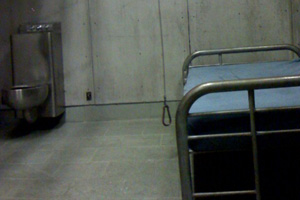If the lame duck Congress is looking for legislation to pass before the Republicans take hold, it should look no farther than two laws passed as part of the so-called War on Crime, which gives the War on Terror a run for its money when it comes to violating Constitutional and human rights.
The Anti-Terrorism and Effective Death Penalty Act of 1996 (AEDPA), passed after the Oklahoma City bombing with broad bipartisan support, undermined habeas the corpus rights of US prisoners long before the Bush Administration sought to withhold them from “enemy combatants.” AEDPA placed severe limitations on prisoners’ ability to challenge death sentences—or life sentences, or any unjust convictions—in federal courts, even when they had new evidence of their innocence.
Under AEDPA, proof of “actual innocence” does not necessarily prohibit the execution or continued incarceration of prisoners. (A recent Supreme Court decision in the Troy Davis case questioned, but did not eliminate, this reality.) And while the pace of executions has slowed in recent years in spite of the AEDPA, the law still stands in the way of appeals by many prisoners across the country who might have just grounds for seeking to have their convictions overturned.
The Prison Litigation Reform Act (PLRA) also passed in 1996, was intended “to deter inmates from bringing frivolous lawsuits,” said the New York Times in a recent editorial. “What the law has done instead is insulate prisons from a large number of very worthy lawsuits, and allow abusive and cruel mistreatment of inmates to go unpunished.”
While it may not go as far as Bush’s Justice Department in justifying torture, the PLRA sanctions treatment that would be considered cruel and inhumane under international standards. To mount a successful lawsuit against prison conditions, prisoners must now show that they suffered “physical injury.” As the Times describes it, “Prisons across the country have used this requirement to dismiss suits challenging all kinds of outrageous treatment: strip-searching of female prisoners by male guards; revealing to other inmates that a prisoner was HIV-positive; forcing an inmate to stand naked for 10 hours.” Federal courts have also found that prolonged isolation and even prison rape often do not meet the “physical injury requirement.”
Both these laws are highly relevant to the issue of solitary confinement. Despite evidence of both the psychological and physical damage it causes, long-term lockdown has been deemed not to meet the physical injury requirement under the PLRA. And the AEDPA has limited recourse for wrongly convicted prisoners on America’s death rows and segregated housing units.
After the 2008 elections, a coalition of organizations coordinated by the Constitution Project produced a set of policy recommendations for the new administration and Congress on criminal justice and the rule of law. Among them were guidelines for reforming both the AEDPA and the PLRA.
House Democrats have introduced legislation to reform both of these laws: the Effective Death Penalty Appeals Bill and the Prison Abuse Remedies Act. So far neither bill has made much progress in Congress. As for the White House, critics have accused the Obama Administration of doing too little to address the rollback of Constitutional rights that took place under Bush in the name of the war on terror. It remains to be seen whether it will do more—or do anything—to restore rights lost in the name of the war on crime.












